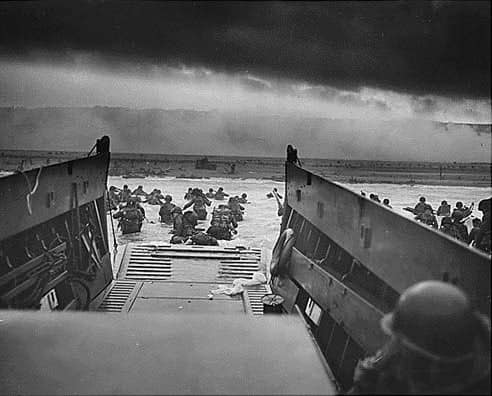In warfare, it is not unusual for a war to have a pivotal battle, a turning point after which the fighting continues, but the outcome of the war becomes increasingly clear. With the American Civil War, that battle took place at Gettysburg, Pennsylvania on July 1-3 in 1863. In World War 2, the pivotal battle occurred on June 6, 1944—D-Day—in Normandy, France—although before the battle, the outcome was perilously uncertain. The Battles of Saratoga, which were fought on September 19 and October 7, 1777, are typically considered to represent the turning point of the American Revolutionary War. These conflicts occurred 9 miles south of Saratoga, New York, and they proved that the British were not invincible. Afterward, France became an open ally of the Americans, a move that proved to be critical to an ultimate American victory.
But in each of these cases, as we have indicated, fighting continued beyond these crucial confrontations. General Robert E. Lee of the Confederacy surrendered to Ulysses S. Grant in Appomattox, Virginia, on April 9, 1865. Germany surrendered to the Allies on May 8, 1945. And the American Revolution did not officially end until October 19, 1781 when General Cornwallis surrendered to General George Washington and the French Fleet in Yorktown, Virginia. Ironically, fighting did not completely end until about a year later, but the war itself was effectively over when the British surrendered.
Just as with these and other wars, the War of the Ages between God and Satan—which is also a war between good and evil, right and wrong, and truth and lies—still rages beyond a decisive battle that already has taken place. Ironically, in that battle, it initially appeared that Satan would be the winner. Jesus, God’s Son, came and spoke of God’s coming kingdom (see Matt. 4:17; 10:7). He claimed to be the Bread of life; the Light of the world; the Door for the sheep; the Good Shepherd; the Resurrection and the Life; the Way, the Truth, and the Life; and the true Vine (see John 6:35; 8:12; 10:7,11,14; 11:25; 14:6; 15:1,5). He healed people (see Matt. 4:23) and even raised certain people from the dead (see Mark 5:21-24,35-43; Luke 7:11-17; John 11:1-44). He declared that He, the “Son of Man,” was “Lord of the Sabbath” (Matt. 12:8; Mark 2:28; Luke 6:5). On one occasion when He claimed to forgive sins and was opposed, He proved that He, “the Son of Man,” had “authority on earth to forgive sins” by enabling a man who had been confined to a stretcher to rise from his mat, pick it up, and walk out (Matt. 9:1-8; see also Mark 2:1-12; Luke 5:17-26). People were amazed at Jesus’ teaching, for He taught as one who had authority, and not as the scribes (see Matt. 7:28-29). But He was forcefully opposed by the religious authorities of His day, so much so that they sought to kill Him, and they succeeded! He was crucified as a criminal between two real criminals, even though He Himself had done nothing wrong (see Luke 23:32-33). His disciples deserted Him (see Matt. 26:55-56). He died, and He was buried (see Luke 23:46,50-53). It appeared that His death would be the end of everything He’d preached and advocated.
Even so, appearances often mislead, and on Sunday morning after Jesus had died on Friday, He returned to life. Both His followers and His enemies were amazed (see John 20:1-29; Matt. 28:11-15). With His death and resurrection, Jesus proved He was and is Lord over life and death (see Phil. 2:5-11). This was the decisive battle, and the outcome of the war is not in question (see Acts 17:30-31; Rev. 1:17-18; 11:15; 20:10). We who are engaged in subsequent struggles today need to remember this. Jesus already is the ultimate Victor!
Copyright © 2018 B. Nathaniel Sullivan. All rights reserved.
Unless otherwise indicated, Scripture has been taken from the New King James Version®. Copyright © 1982 by Thomas Nelson, Inc. Used by permission. All rights reserved.
